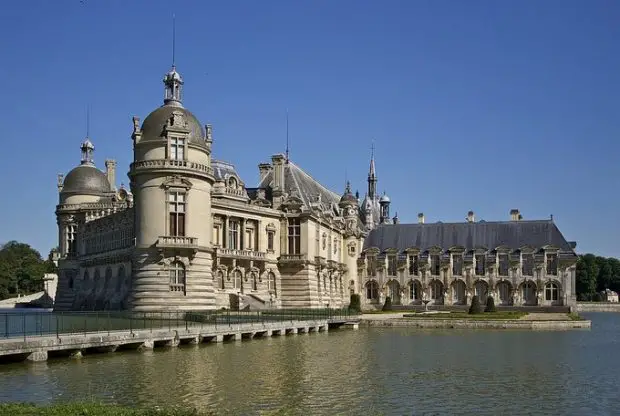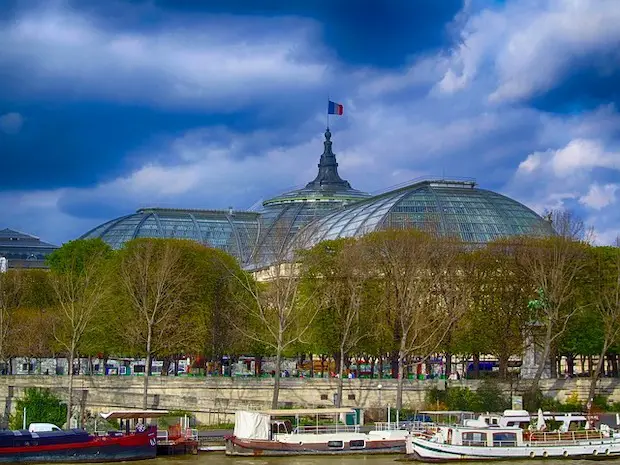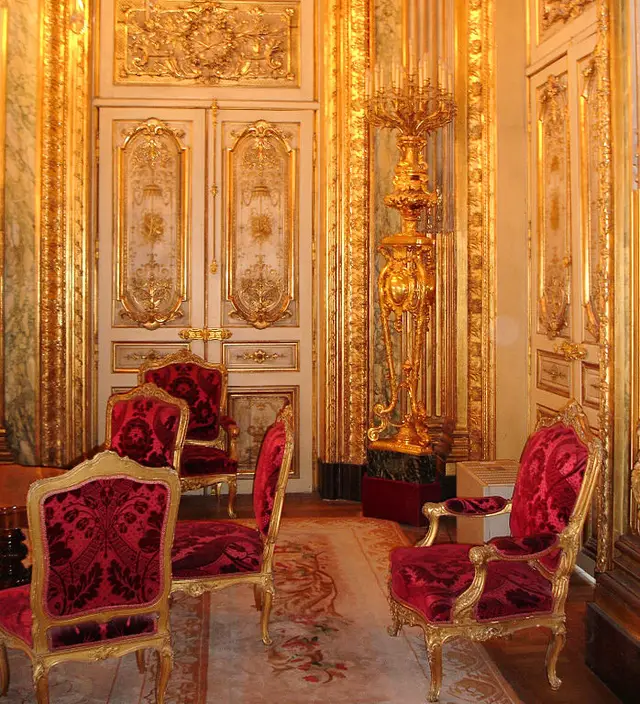Is it possible to visit the Louvre in two hours? Yes. With the circuit that I present here, you’ll walk by the most famous works of art in the museum and visit all three wings of the building.
The entrance and exit are located inside the pyramid.
Are you ready? Let’s go! We have a lot to see! 18 pieces of art to be more precise.
My tip: buy your tickets in advance – it will save you a lot of time. Plus, the provided link offers exclusive discounts of up to 12% off when booking a combined ticket with a Seine River cruise, a visit to the Arc de Triomphe, or a visit to the Orsay/Pompidou Museums.
The Horses of Marly — Guillaume Coustou
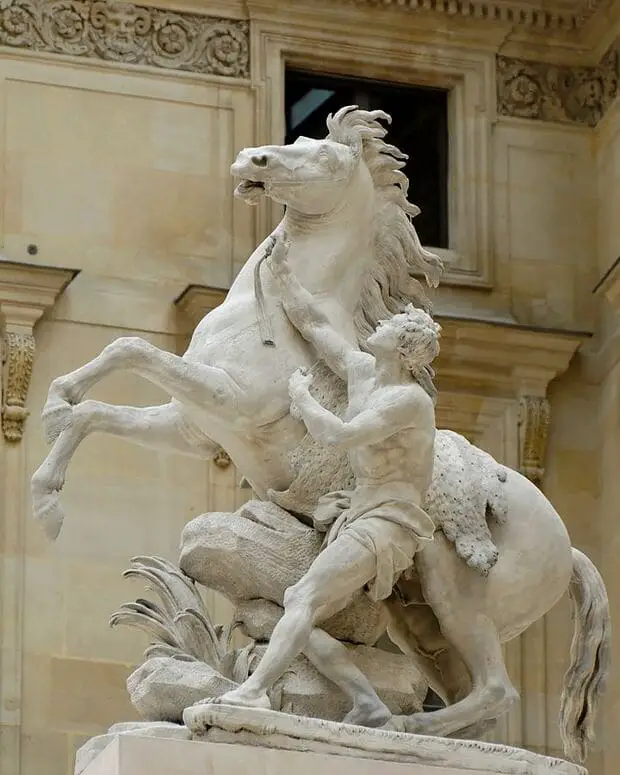
Location: Floor 1, Richelieu Wing, Room 102 Cour Marly
Distance from the entrance: 300 meters
Access time: 6 minutes
Why is it a must-see? The Horses of Marly is a pair of statues by Guillaume Coustou. Both of them are called Horse Restrained by a Groom and they overhang the cour Marly.
These sculptures are iconic since the room where they are exhibited was named after them. The cour Marly is, by the way, worth stepping inside as well.
Unlike the other statues in the room, the topic isn’t mythological. It’s actually pretty common!
You can admire the technique of the sculptor. He displays a perfect mastery of his art by reproducing the ardor of snorting horses with precision and talent.
Joan of Arc Listening to the Voices — François Rude
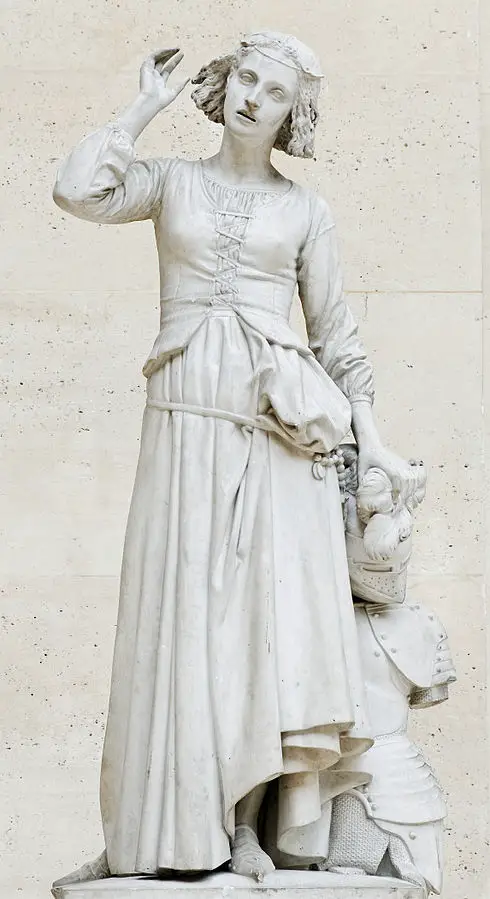
Location: Floor 1, Richelieu Wing, Room 105 Cour Puget
Distance from the previous work of art: 350 meters
Access time: 7 minutes
Why is it a must-see? Joan of Arc is a very important French historical figure. It is mostly due to her part in the Hundred Years’ War, which took place during the Middle Ages.
There are a multitude of depictions of this warrior and saint in both paintings and sculptures.
The sculpture Joan of Arc Listening to the Voices by François Rude highlights this trend. It was indeed very popular in the 19th century. At that time, Romanticism and nationalism were starting to gain importance.
In this sculpture, you’ll see all the complexity of a historical figure that fascinates so many even today.
Sleeping Hermaphroditus
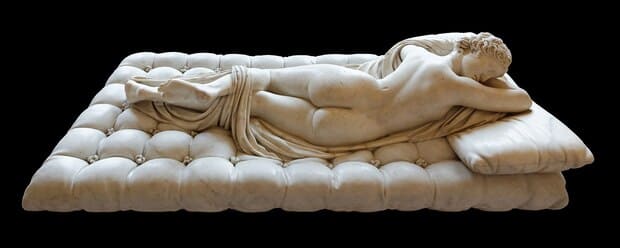
Location: Floor 0, Sully Wing, Room 348 Gods and Ancient Greek Heroes
Distance from the previous work of art: 750 meters
Access time: 15 minutes
Why is it a must-see? The Sleeping Hermaphroditus depicts an androgynous individual lying on a mattress. He is Hermaphroditus, the son of Hermes and Aphrodite.
The sculpture deserves a few minutes of our time because it defies our normal representations of femininity and masculinity.
Is it a man or a woman that we see? Neither, or maybe both.
In light of the recent struggles of gender binary people, this work of art reminds us that even long ago in Western society the line between feminine and masculine wasn’t always all that clear.
Apollo sauroctonos
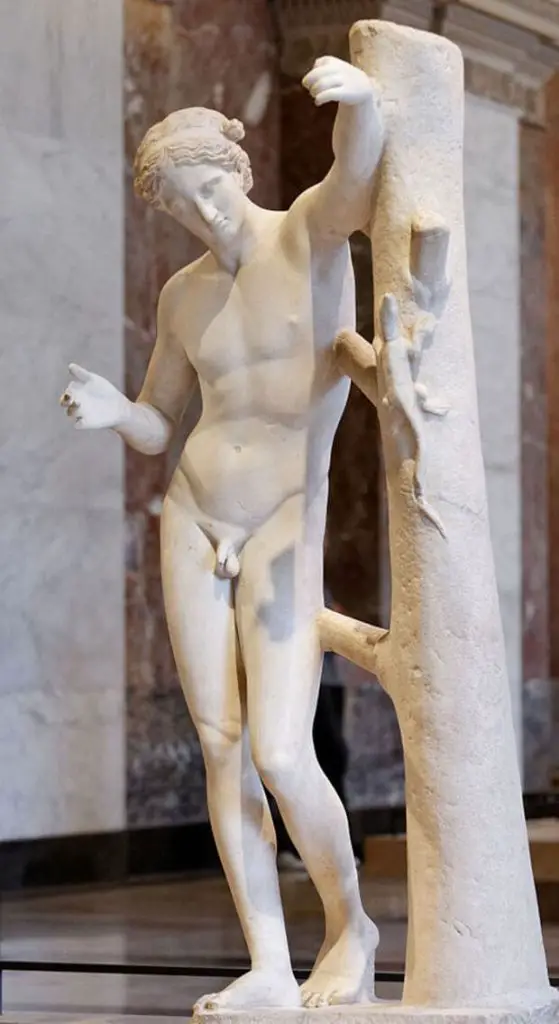
Location: Floor 0, Sully Wing, Room 348 Gods and Ancient Greek Heroes
Distance from the previous work of art: 100 meters
Access time: 2 minutes
Why is it a must-see? Apollo sauroctonos (Apollo lizard-killer) is a statue that may seem a bit strange at first glance.
Why is the Greek god Apollo represented next to a lizard on a tree? The answer lies in Greek mythology: the statue depicts the famous fight between the god and the snake named Python which enabled Apollo to take possession of the Oracle of Delphi.
The topic of the sauroctonos is very popular even among Christian myths that find their inspiration in ancient tales of dragon-killing saints. Consequently, this sculpture is worth seeing.
Vénus de Milo
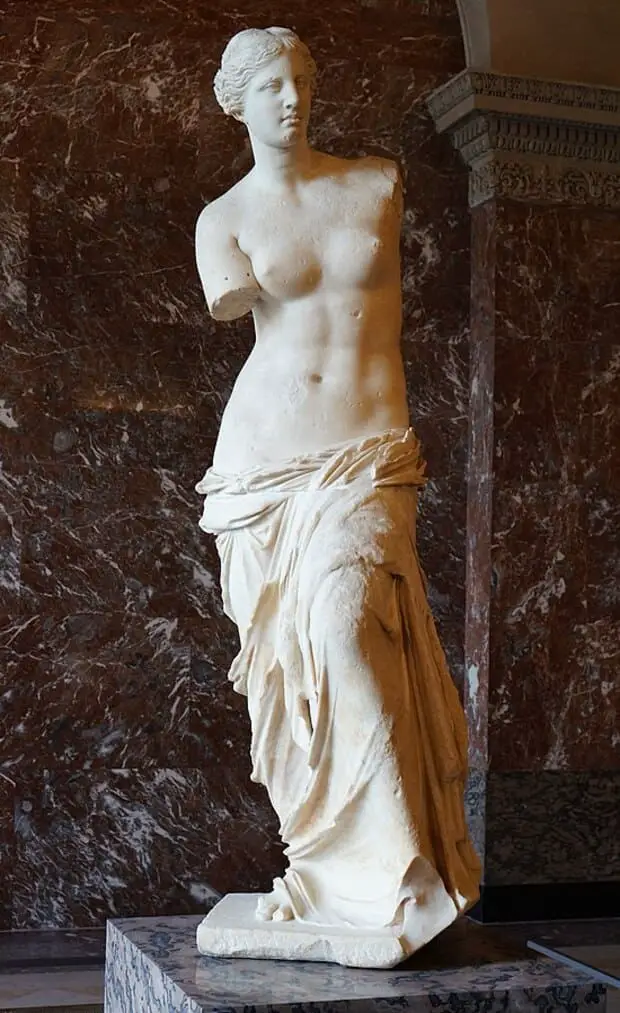
Location: Floor 0, Sully Wing, Room 345 Classic Greek and Hellenistic Art
Distance from the previous work of art: 250 meters
Access time: 5 minutes
Why is it a must-see? The Vénus de Milo needs no introduction. Representing either the goddess Aphrodite or Amphitrite, the work of art has a worldwide reputation (many of us remember it because of its missing arms).
For this reason, no trip to the Louvre would be complete without seeing one of the most popular women in the museum with your own eyes.
Man Formed by Prometheus and Animated by Minerva — Jean-Simon Berthélemy
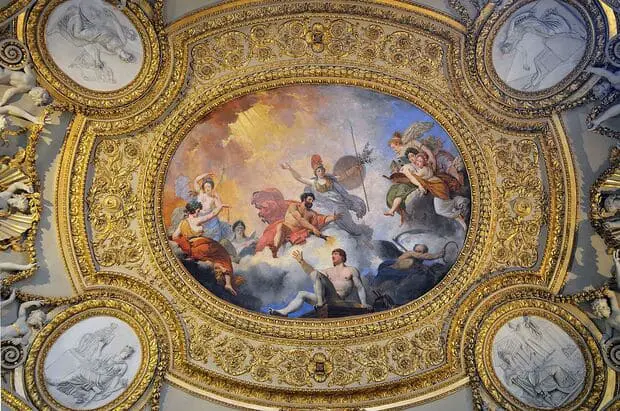
Location: Floor 0, Denon Wing, Room 408 La Rotonde de Mars
Distance from the previous work of art: 300 meters
Access time: 6 minutes
Why is it a must-see? You’ll have to look up to discover this painting by Jean-Simon Berthélemy in the Mars Rotunda.
Painted on the ceiling, the work depicts the myth of Prometheus, the titan who brought knowledge to humankind.
Your last stop before the next floor, Man Formed by Prometheus and Animated by Minerva is a reminder to appreciate the gorgeous ceilings in the various rooms. Many are works of art in their own right.
Winged Victory of Samothrace
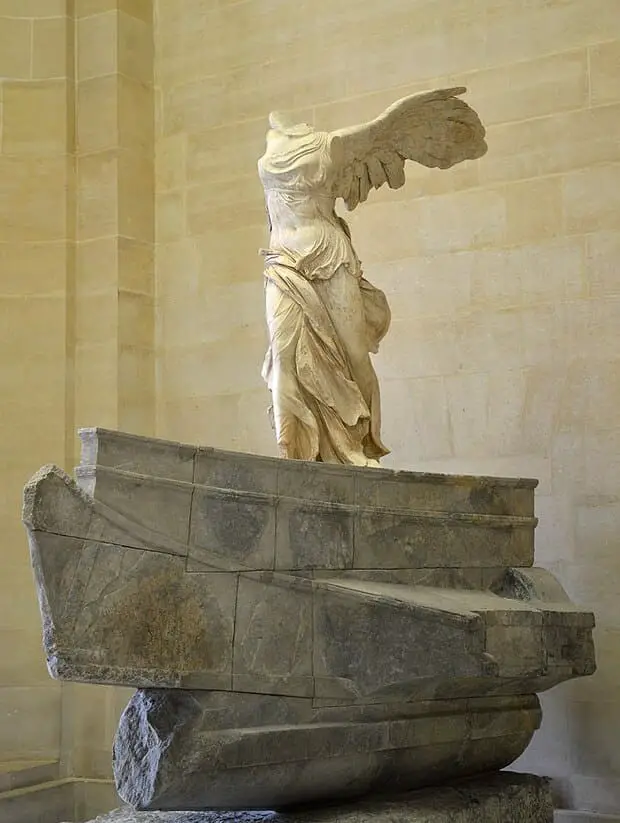
Location: Floor 1, Denon Wing, Room 703 Palier Samothrace
Distance from the previous work of art: 350 meters
Access time: 7 minutes
Why is it a must-see? Proudly overlooking the stairs leading to the 1st floor, the Winged Victory of Samothrace has established itself as one of the most famous statues in the Louvre.
Headless and armless, the goddess Nike stands with wings outstretched on the prow of a Greek ship. She will take your breath away as soon as you go upstairs.
The Victoire has also been recently restored and therefore deserves that we give it a few moments of our time.
Cupid and Psyche — François Edouard Picot
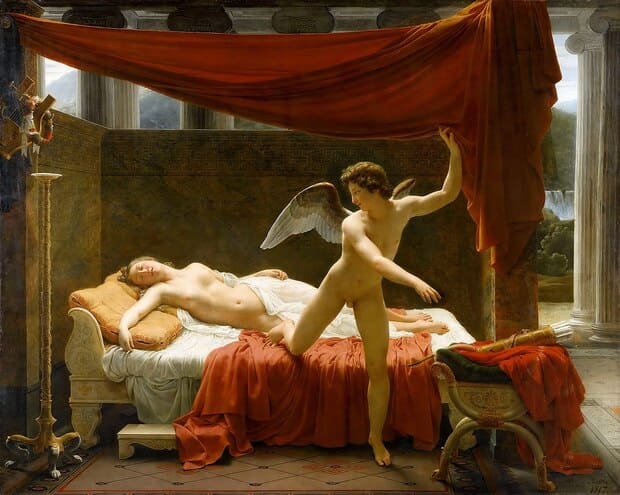
Location: Floor 1, Denon Wing, Room 702 Daru Neoclassicism
Distance from the previous work of art: 250 meters
Access time: 5 minutes
Why is it a must-see? This painting is one of the numerous depictions of the relationship between Cupid and Psyche.
It is interesting in so many ways, but most notably for the way Cupid is depicted, jumping right off the bed with a last look toward his beloved.
The detail in the lighting and the depiction of the bodies are two more reasons why Cupid and Psyche must be seen during a visit to the Louvre.
The Coronation of Napoleon — Jacques-Louis David
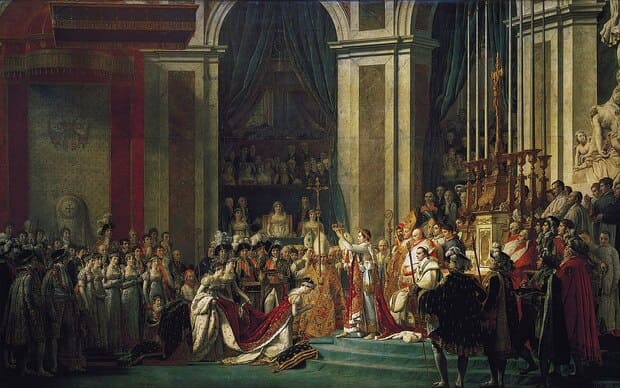
Location: Floor 1, Denon Wing, Room 702 Daru Neoclassicism
Distance from the previous work of art: 100 meters
Access time: 2 minutes
Why is it a must-see? You will be impressed by this massive work of art by Jacques-Louis David.
The Coronation of Napoleon measures six meters by ten meters and depicts the coronation of Napoleon I and his wife Joséphine in the Cathedral of Notre Dame on December 2, 1804.
Studied by many students, the painting depicts an important event in French history. For that reason, you must see it.
The Death of Marat — Jacques-Louis David
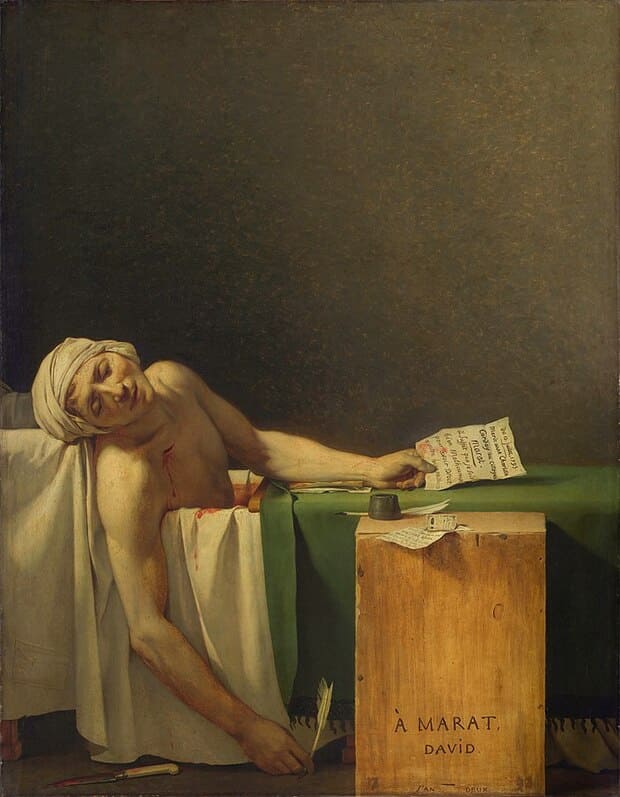
Location: Floor 1, Denon Wing, Room 702 Daru Neoclassicism
Distance from the previous work of art: 100 meters
Access time: 2 minutes
Why is it a must-see? Jacques-Louis David was a talented painter whose works set down some of the most memorable events that France has seen.
His painting The Death of Marat is no exception: it depicts Jean-Paul Marat after he was murdered on July 13, 1793.
David pays tribute to his friend through this painting of this tragic post-French Revolution event.
The Young Martyr — Paul Delaroche
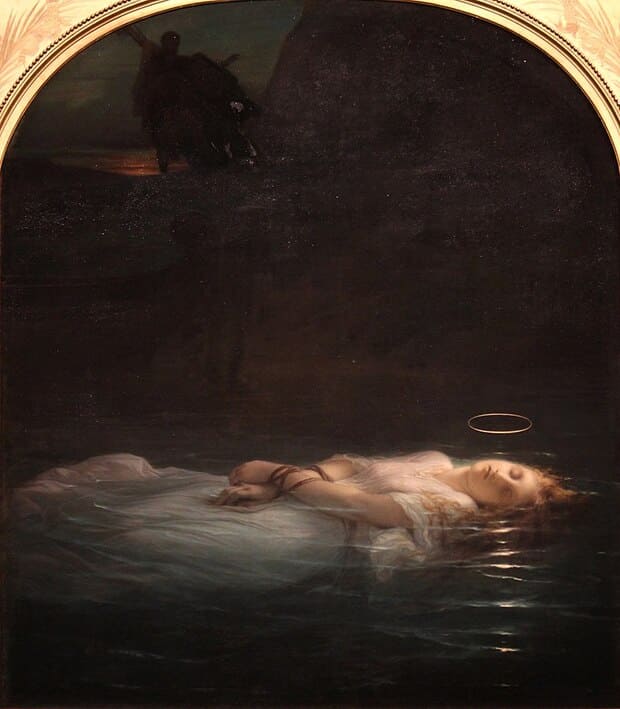
Location: Floor 1, Denon Wing, Room 701 Denon
Distance from the previous work of art: 150 meters
Access time: 3 minutes
Why is it a must-see? The Young Martyr is a very beautiful painting by Paul Delaroche. It depicts the dead body of a young Roman woman who was murdered because of her belief in Christ.
The chiaroscuro used in the work is quite striking. Moreover, the halo above the girl’s head gives her an almost divine appearance.
The delicate brushwork confers a strange softness to the painting, which comes as a surprise given its brutal topic.
Mona Lisa — Leonardo Da Vinci
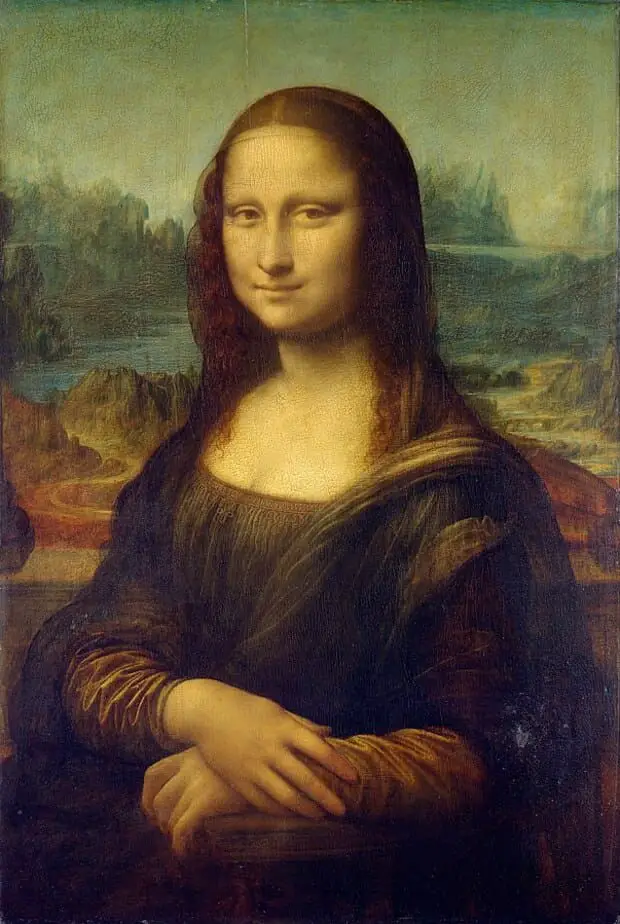
Location: Floor 1, Denon Wing, Room 701 Salle de la Joconde
Distance from the previous work of art: 50 meters
Access time: 1 minute
Why is it a must-see? Since one simply cannot walk into the Louvre without stopping by the Mona Lisa, I’ve included it in my circuit.
You’ll finally be able to contemplate her mysterious smile in person. While you take a good look, appreciate the brushwork – the sfumato technique – that makes her so fascinating.
Mysteries of Christ’s Passion — Antonio Campi
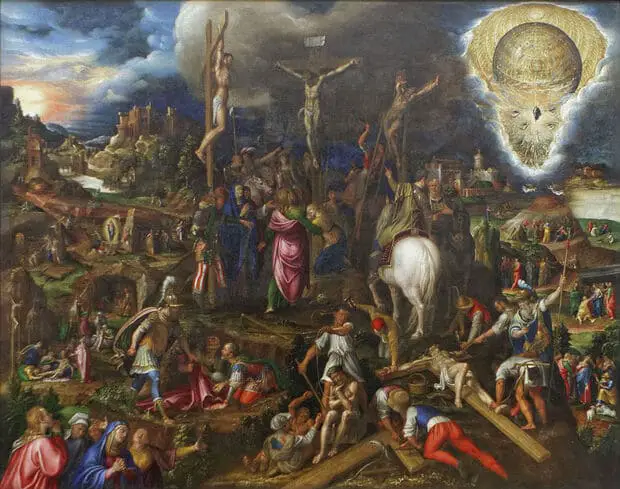
Location: Floor 1, Denon Wing, Room 712 Great Gallery
Distance from the previous work of art: 250 meters
Access time: 5 minutes
Why is it a must-see? This is a very impressive painting. Indeed, it depicts all the events that happened from the death to the ascension of Jesus. All that in only one masterpiece.
You can spend hours looking at it and trying to recognize each of the events. The mystical aspect and color choices will also leave a strong impression on you.
Autumn — Giuseppe Arcimboldo
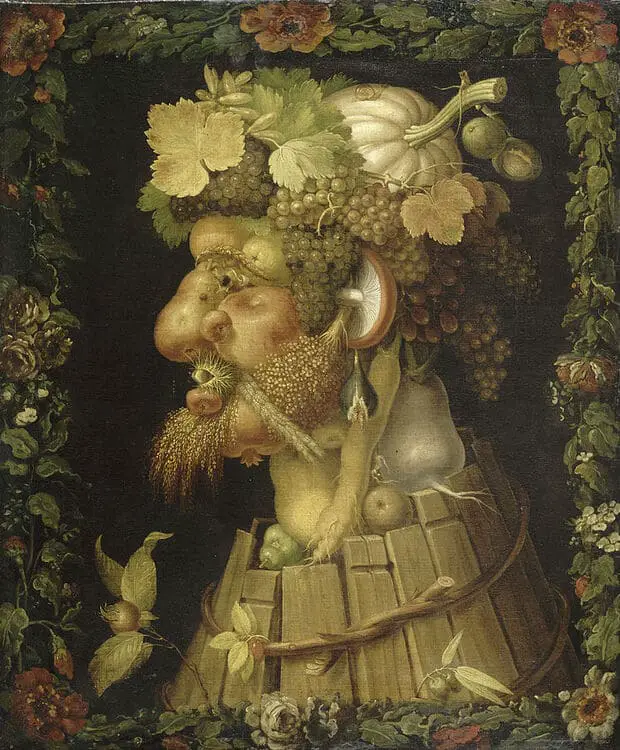
Location: Floor 1, Denon Wing, Room 712 Great Gallery
Distance from the previous work of art: 150 meters
Access time: 3 minutes
Why is it a must-see? Arcimboldo’s paintings are remarkable because they play with our perception of reality. In Autumn, he used seasonal fruits and vegetables to create a human-like shape on his canvas.
His plant arrangements are famous all around the world. Therefore, be sure to take this opportunity to see one of them.
Liberty Leading the People — Eugène Delacroix
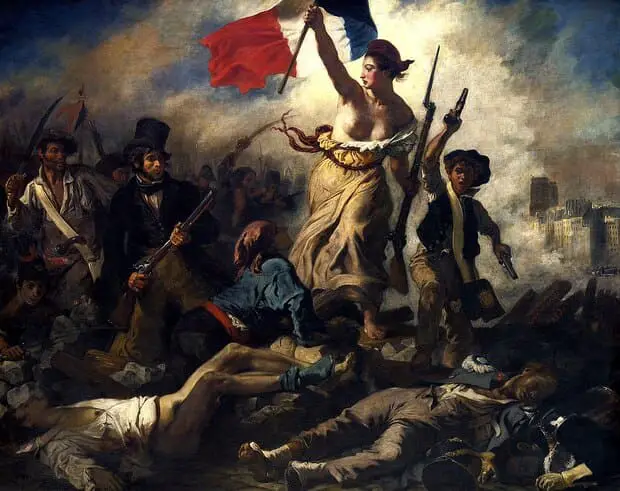
Location: Floor 1, Denon Wing, Room 700 Mollien
Distance from the previous work of art: 500 meters
Access time: 10 minutes
Why is it a must-see? This piece is an iconic painting for many French people. It represents the July Revolution and the barricades that Victor Hugo described in his novel Les Misérables.
The painting has become a symbol of freedom and democracy all around the world. So, you should take advantage of the opportunity to see the original.
The Raft of the Medusa — Théodore Géricault
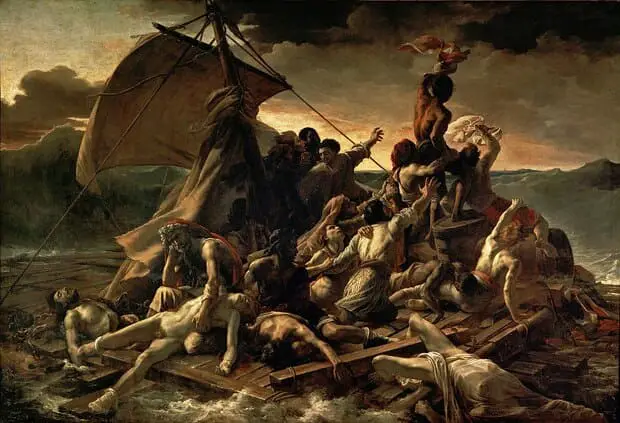
Location: Floor 1, Denon Wing, Room 700 Mollien
Distance from the previous work of art: 50 meters
Access time: 1 minute
Why is it a must-see? Most French people probably studied The Raft of the Medusa in middle school or high school. The painting depicts the sinking of the frigate Medusa as it was sailing towards Senegal.
Tragic in its excellence, the work is truly breathtaking. We are struck by the despair on the face of each crew member.
The darkness of the topic and the realistic depiction of the bodies will make you shiver.
Portal of the Palace Stanga-Rossi-di-San-Secondo — Pietro Da Rho
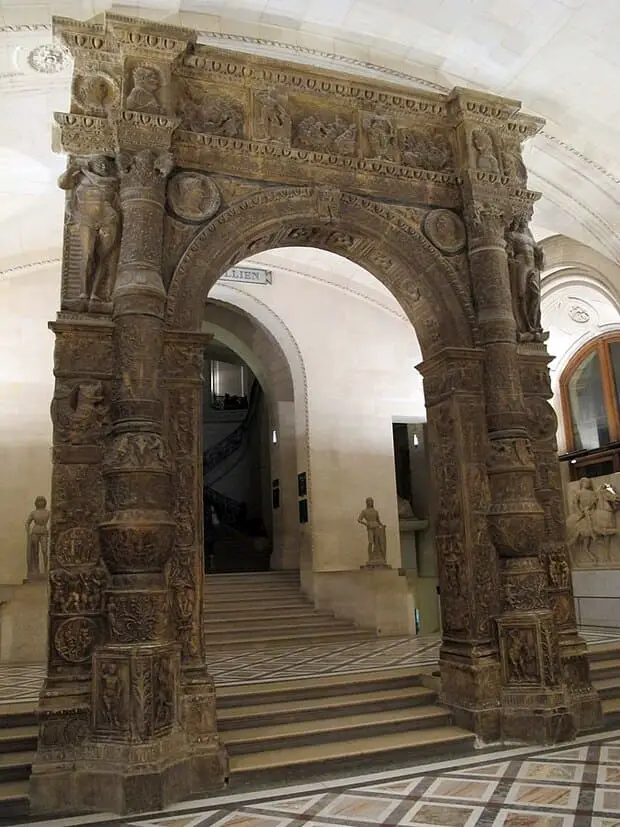
Location: Floor 1, Denon Wing, Room 403 Michelangelo Gallery
Distance from the previous work of art: 150 meters
Access time: 3 minutes
Why is it a must-see? Engraved in marble, we can see depictions of Greek heroes such as Perseus and Hercules, on the portal.
The details are remarkable, and the work gives us a glimpse of just how luxurious Roman palaces were during antiquity.
Il Moro (the Moor) — Nicolas Cordier
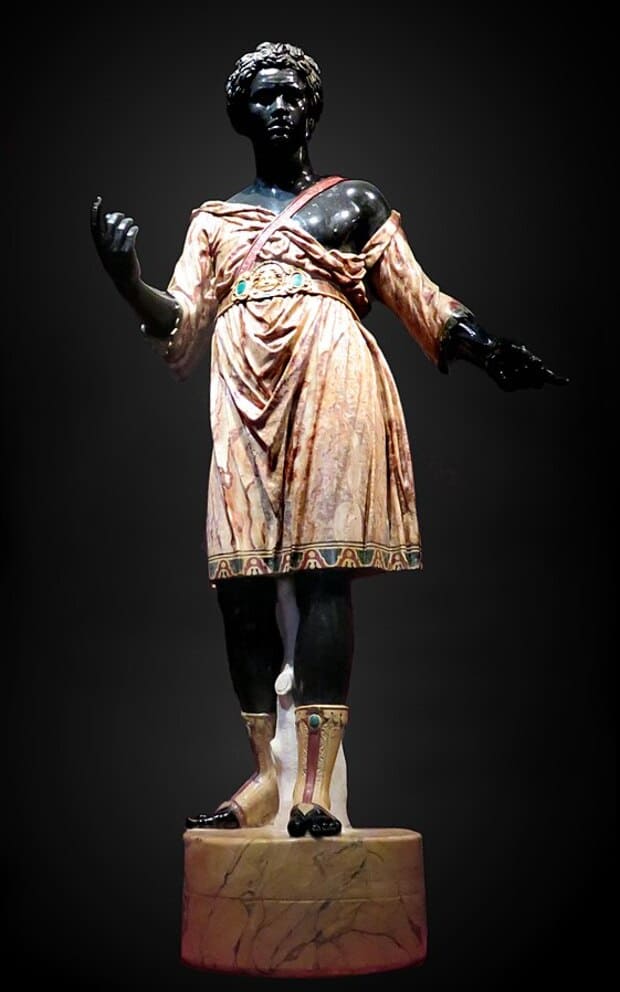
Location: Floor 0, Denon Wing, Room 405 Salle du Manège
Distance from the previous work of art: 400 meters
Access time: 8 minutes
Why is it a must-see? To end your two-hour visit, stop to admire Il Moro.
Very few works in the Louvre represent non-European characters, which makes this statue stand out since the Moor isn’t white.
The work is considered one of the masterpieces of the Department of Greek, Etruscan, and Roman Antiques. For that reason, Il Moro is a crucial stop on your circuit.
I aim to share my tips and recommendations for the beautiful country of France. My goal is to help you plan your next adventure, whether it’s a weekend getaway or a once-in-a-lifetime trip. From finding the best hotels and restaurants, to discovering unique activities and sights, I’ve got you covered!


